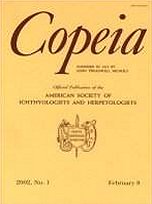We studied growth, condition, spawning period, activity patterns, and movement in the Salish Suckers of Pepin Brook in British Columbia's Fraser Valley. Radio-telemetry showed that fish were crepuscular, had home ranges averaging 170 m of linear channel, made their longest movements during the spawning period (March to early July), and rarely crossed beaver dams. Relative to closely related catostomids, Salish Suckers are small, early maturing, and have a prolonged spawning period. These characteristics are likely to impart good resilience to short-term disturbances of limited spatial scale and to facilitate successful reintroductions to suitable habitat. The chronic, large-scale disruptions that affect their habitat in Canada, however, are likely to cause further extirpations over time. Given its limited geographic distribution, management of the Salish Sucker should focus on protecting all remaining habitat and exploiting opportunities for habitat restoration and reintroduction into suitable habitats throughout their historic range.
How to translate text using browser tools
1 December 2003
Life-History Characteristics of the Endangered Salish Sucker (Catostomus sp.) and Their Implications for Management
Mike P. Pearson,
Michael C. Healey
ACCESS THE FULL ARTICLE





